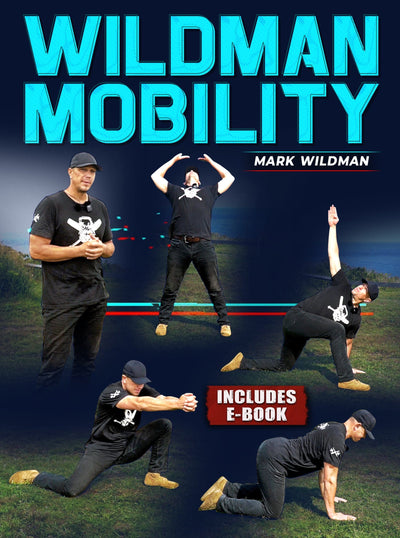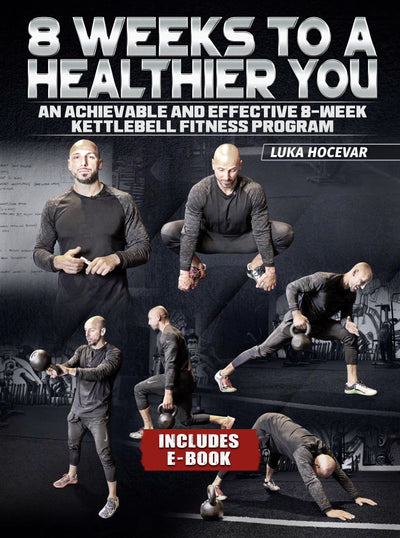Kettlebells Workout for Beginners
Embarking on a fitness journey, especially as a beginner, requires guidance and a structured approach to achieve the desired goals effectively. Kettlebell training, deeply rooted in Russian history, offers a versatile and dynamic platform for beginners venturing into the world of strength and fitness. This ancient piece of gym equipment has evolved over centuries to become a fundamental tool in modern workout routines, renowned for its flexibility and efficiency. In this comprehensive guide, we will explore the history of kettlebells, the manifold benefits they offer, and provide a detailed introduction to essential kettlebell exercises tailored for beginners. Delve into this journey to discover how kettlebells can transform your fitness regimen, promoting strength, endurance, and overall well-being.
What this article covers:
- History of Kettlebells
- Benefits of Using Kettlebells
- Example Kettlebell Exercises for Beginners
- Beginner Kettlebell Workout Routine
History of Kettlebells
The kettlebell, a simple yet versatile piece of gym equipment, has a history rooted in Russian culture. Its origins trace back to the 18th century when kettlebells were initially used as counterweights for market scales. Russian farmers recognized the benefits of lifting and swinging kettlebells for physical prowess and began incorporating them into their training routines. Over time, kettlebell lifting became a formalized sport, and the trend eventually spread globally, solidifying its place in modern fitness routines.
Benefits of Using Kettlebells
Versatility and Flexibility
Kettlebells are a jack-of-all-trades in the gym. They offer a broad range of exercises, from ballistic movements like swings to controlled strength exercises like presses. This versatility allows for a full-body workout, engaging major muscle groups and promoting overall functional fitness. The adaptable nature of kettlebells makes them suitable for all fitness levels.
If you are looking for suggested kettlebell weight for beginners, kettlebell workouts for female beginners, advanced kettlebell workouts, 3 day a week kettlebell workouts, or intermediate kettlebell workouts we have you covered!
Efficient Full-Body Workouts
Kettlebells provide an efficient way to work on strength, endurance, and cardiovascular fitness simultaneously. Dynamic movements like swings and snatches engage the entire body, challenging muscles to work synergistically. This not only saves time but also boosts metabolism and burns calories at a higher rate.
Functional Strength
Kettlebell exercises often replicate movements encountered in daily life—lifting, swinging, and carrying. By mimicking these functional movements, kettlebells help develop strength that is applicable and beneficial to everyday activities, making your body more resilient and capable.
Increased Core Engagement
Almost every kettlebell exercise demands significant core engagement. The off-centered weight distribution in kettlebells requires your core muscles to work harder to stabilize your body during exercises. This results in improved core strength and stability, which is crucial for posture, balance, and preventing injuries.
Enhanced Cardiovascular Fitness
Kettlebell workouts are intense and elevate your heart rate rapidly. Movements like swings, snatches, and high pulls make for an excellent cardiovascular workout, enhancing heart and lung health. The combination of strength and cardio in kettlebell training promotes overall cardiovascular fitness.
Example Kettlebell Exercises for Beginners
Kettlebell Goblet Squats
Begin by holding a kettlebell close to your chest with both hands, elbows pointing down. Perform a squat by pushing your hips back and bending your knees, keeping your chest up. Lower yourself while maintaining a neutral spine and ensuring your knees align with your toes. This exercise targets the quadriceps, hamstrings, glutes, and engages the core.
Kettlebell Swings
Start with a shoulder-width stance, hinge at your hips, and hold the kettlebell with both hands between your legs. Swing the kettlebell back between your legs, then explosively drive your hips forward to swing it to chest height. Control the descent and repeat. This dynamic exercise targets the posterior chain, including the glutes, hamstrings, and lower back.
Kettlebell Deadlifts
Begin with the kettlebell on the ground between your feet. Hinge at the hips while maintaining a flat back, and grab the kettlebell handle with both hands. Stand up by extending your hips and knees, keeping the kettlebell close to your body. Lower the kettlebell back to the ground with controlled movement. This exercise strengthens the posterior chain and improves hip hinge mechanics.
Turkish Get-Up
Start by lying on your back with a kettlebell in one hand, arm extended towards the ceiling. Follow a series of movements to transition from lying down to standing while keeping the kettlebell stable above you. The Turkish Get-Up engages the entire body, focusing on stability, mobility, and strength.
Kettlebell Bent-Over Rows
Begin with a hip-width stance, hinge at the hips, and hold a kettlebell in one hand. Pull the kettlebell towards your torso, leading with your elbow and keeping it close to your body. Lower the kettlebell back down with control. This exercise targets the back muscles, particularly the lats and rhomboids.
Kettlebell Russian Twists
Start by sitting on the floor with your knees bent and your feet flat. Lean back slightly, maintaining a straight back, and hold the kettlebell with both hands close to your chest. Lift your feet off the ground if comfortable. Twist your torso to the right and touch the kettlebell to the floor beside your hip, then twist to the left and repeat the movement. This exercise targets the obliques and helps improve rotational core strength.
Kettlebell Shoulder Halo
Begin by holding the kettlebell by the handle at chest height with both hands. Keeping your core engaged, smoothly circle the kettlebell around your head, passing it behind your head, and then back to the starting position in front of your chest. Alternate directions after each circle. The kettlebell shoulder halo is excellent for shoulder mobility and stability.
Beginner Kettlebell Workout Routine
Now that you know a little history, the benefits, and a litany of exercise examples lets take a look at a beginner kettlebell workout!
Warm-up (5-10 minutes):
Begin with a dynamic warm-up involving exercises like arm circles, leg swings, and bodyweight squats to increase blood flow and prepare muscles for the workout.
Exercise Circuit (3-4 rounds):
Kettlebell Goblet Squats: 10-12 reps
Kettlebell Swings: 15-20 reps
Kettlebell Deadlifts: 10-12 reps
Turkish Get-Up: 1-2 reps per side
Kettlebell Russian Twists: 12-16 reps (6-8 per side)
Kettlebell Shoulder Halo: 8-10 circles in each direction
Cool Down (5-10 minutes):
Finish the workout with static stretches for major muscle groups, holding each stretch for 20-30 seconds, to aid in recovery and flexibility.
Kettlebells offer a holistic approach to fitness for beginners, encompassing strength, endurance, cardiovascular health, and functional fitness. Their rich history and adaptability have made them a staple in modern workouts. Remember to prioritize proper form, gradual progression, and consult a healthcare professional before starting any new exercise program, especially if you have any pre-existing medical conditions or concerns. Embrace the kettlebell as a tool for transforming your fitness and well-being, and enjoy the journey toward a stronger, healthier you.
Did you find the blog helpful? If so, consider checking out other guides:
- Kettlebell Workout Program
- 12 Week Kettlebell Workout Program
- Full Body Kettlebell Workout Program
- Kettlebell and Barbell Program
- 6-Week Kettlebell Workout Program
- Building Muscle with Kettlebells
- Kettlebell Pushups
- Kettlebell Cleans
- Kettlebell Lift
- How to Do a Kettlebell Clean
- Kettlebell Overhead Tricep Extension
- Unilateral Exercises for Muscle Imbalance Kettlebell
- The Kettlebell Get Up
- Kettlebell Turkish Get Up
- Kettlebell Core Workout





